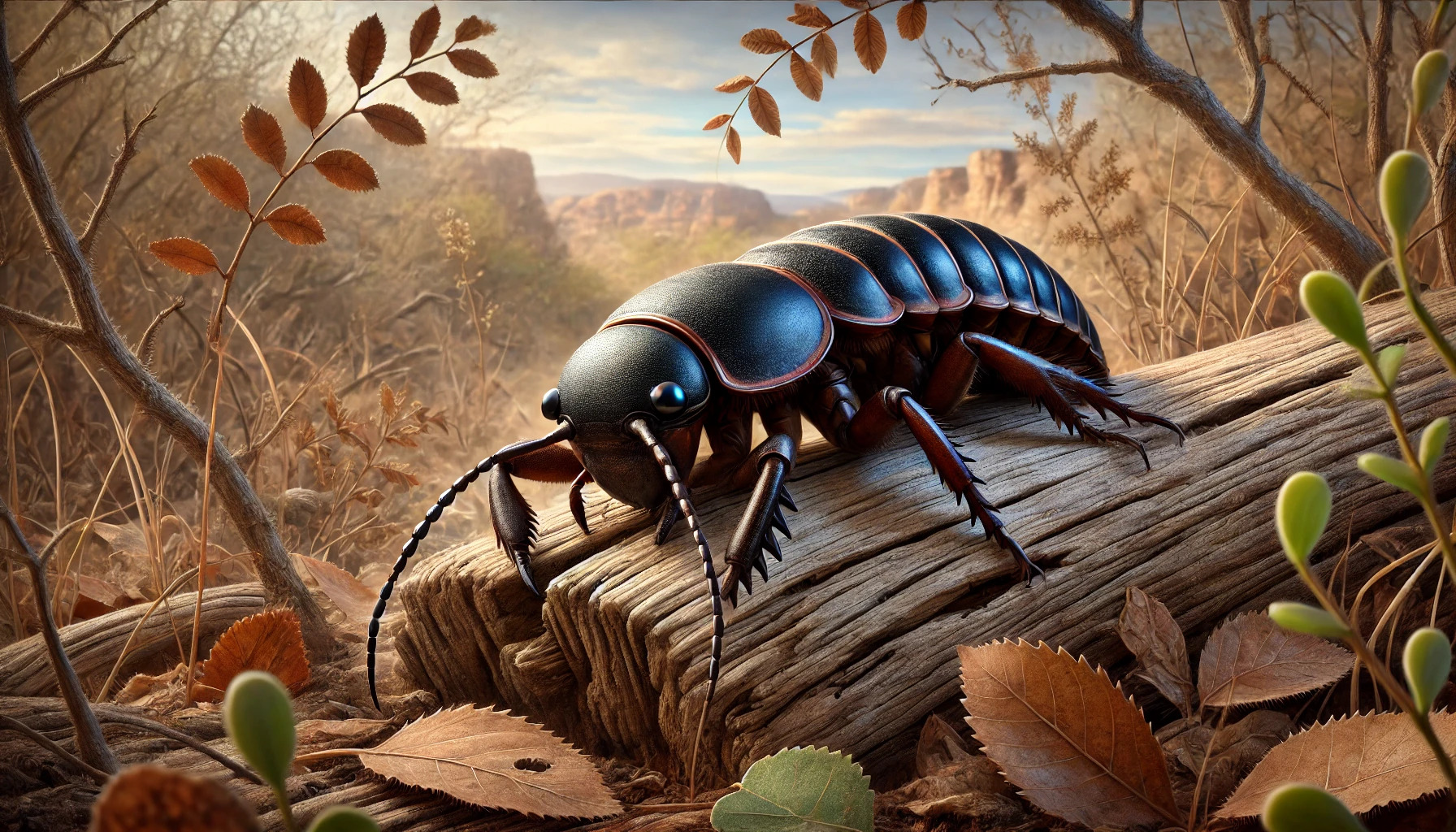The St. Helena Giant Earwig was once the largest known earwig in the world, reaching lengths of up to 8 cm. This fascinating insect was native to the remote island of St. Helena, located in the South Atlantic Ocean. Sadly, it was declared extinct in 2014, leaving behind a legacy that sparks curiosity and concern about biodiversity.
Many people may not realize the important role such unique creatures play in their ecosystems. Understanding the story of the St. Helena Giant Earwig sheds light on the impact of habitat loss and the importance of conservation efforts.
Exploring the history of this giant earwig reveals much about both the natural world and the consequences of human actions. Readers will find that the tale of the St. Helena Giant Earwig is not just about one species, but a reminder of the fragile balance of ecosystems and the urgency to protect them.
Taxonomy and Classification
The St. Helena Giant Earwig, scientifically known as Labidura herculeana, belongs to a unique category in the insect world. Its classification reflects its distinct features and the history behind its study.
Scientific Name and Origins
The scientific name for the St. Helena Giant Earwig is Labidura herculeana. It was first described by the Danish entomologist Johan Christian Fabricius in 1798. This name indicates its classification in the order Dermaptera, known for various species of earwigs.
Labidura herculeana has had a complicated history. Initially, it was confused with another species, Labidura riparia. In 1904, it was demoted to a subspecies but was rediscovered in 1962. This rediscovery highlighted the importance of this earwig and its unique place in biodiversity.
Family and Genus
The St. Helena Giant Earwig belongs to the family Labiduridae. This family includes various earwigs with similar characteristics. The genus Labidura is known for its larger species.
Within its family, Labidura herculeana is recognized as the largest known earwig, reaching lengths of up to 80 mm. It is found primarily on St. Helena Island, where it lives mainly underground. Its specific adaptations, such as its size and habitat, make it an interesting subject for entomologists and conservationists alike.
Physical Characteristics
The St. Helena Giant Earwig is notable for its large size and distinct appearance. Understanding its physical traits helps appreciate this unique insect.
Size and Appearance
This earwig is the largest of its kind, measuring between 1.44 to 2.13 inches (36 to 54 millimeters). Its body is typically a glossy black color, complemented by reddish legs and wing covers. Unlike many earwig species, it lacks hind wings, which contributes to its robust appearance.
The shape of the St. Helena Giant Earwig’s body is elongated and somewhat flattened. This structure aids in moving through soil and under rocks where it prefers to hide. The combination of its size and coloration makes it easily recognizable among similar insects.
Unique Features
One of the most interesting aspects of this earwig is its large cerci, which are the appendages at the rear of its body. These cerci are often used for defense and mating displays. The St. Helena Giant Earwig also has a distinctive lack of wings, a feature that sets it apart from many other earwigs.
Additionally, it has well-developed mandibles that are perfect for its diet, which includes decaying organic matter. Its nocturnal habits mean that it is more active during the night, seeking shelter during the day. This adaptations help it thrive in its unique habitat on Saint Helena.
Habitat and Distribution
The St. Helena Giant Earwig has a unique habitat and a very limited distribution. This species is known only from a specific location on the island of Saint Helena, which affects its survival and conservation.
Geographic Location
The St. Helena Giant Earwig is found exclusively on Saint Helena, a small British territory in the southern Atlantic Ocean. This island is located about 1,200 miles off the southwest coast of Africa.
The earwig is primarily located in the northeastern part of the island, specifically in the Horse Point Plain area. This isolated geographic location makes the earwig particularly vulnerable to environmental changes and human activities.
Habitat Preferences
The St. Helena Giant Earwig prefers dry, stony habitats. It thrives in areas with sparse vegetation, including bushes and tufts of grass.
It typically lives in rocky crevices and other sheltered spots that provide protection from the elements. The specific soil composition and microclimate of Horse Point Plain are critical for its survival.
This specialized habitat preference has contributed to its rarity, as it relies on both the right environment and specific conditions that may be vulnerable to change.
Behavior and Ecology
The St. Helena Giant Earwig has unique behaviors and ecological roles that highlight its adaptation to its environment. Understanding its diet, reproductive habits, and threats provides valuable insights into the life of this fascinating insect.
Diet and Feeding Habits
The St. Helena Giant Earwig is a nocturnal insect. This means it is most active at night. It likely feeds on decaying plant material and small insects, though specific details about its diet remain largely unknown.
The habitat consists of dry, stony soil, where it may find organic matter to consume. Being a scavenger allows it to recycle nutrients back into the ecosystem. While information on its specific feeding behavior is limited, its diet is essential for its survival in a harsh environment.
Reproductive Behavior
Reproductive behavior of the St. Helena Giant Earwig is not well documented. However, earwigs generally exhibit fascinating patterns of reproduction. They are known to lay eggs in the soil, where they create burrows for protection.
After mating, females guard their eggs until they hatch. The young earwigs, called nymphs, often stay with their mother for a short time before venturing out. This protective behavior helps improve survival rates among the young.
Predators and Threats
The St. Helena Giant Earwig faces various threats in its habitat. Being nocturnal may help it avoid some predators, but it is still vulnerable. Birds and other insects that hunt at night could prey on them.
Human activity poses significant concerns as well. Habitat destruction and introduction of non-native species can disrupt their ecosystem. As the St. Helena Giant Earwig was last seen in 1967, it raises questions about its continued existence and conservation needs.
Conservation Status
The St. Helena Giant Earwig has faced significant challenges over the years, leading to its current precarious situation. Understanding its historical population, current threats, and conservation efforts is essential for grasping the full picture of its status.
Historical Population
The St. Helena Giant Earwig was first discovered in 1789. It was once a common insect on the island of St. Helena. Throughout the 19th and early 20th centuries, it thrived in its natural habitat, which included areas with plenty of vegetation and rocky shelters.
By the mid-20th century, the population began to decline sharply. The last recorded sighting of living specimens occurred in May 1967. During a Belgian research expedition, 40 individuals were found. This alarming decrease marked the beginning of serious concerns for its survival.
Current Threats
Several factors have contributed to the decline of the St. Helena Giant Earwig. Habitat loss is the most pressing issue, driven by deforestation, invasive species, and development on the island.
Invasive species, like certain insects and animals, compete for resources, disrupting the earwig’s habitats. Changes in climate and rainfall patterns further threaten its survival. These combined factors make finding suitable environments increasingly difficult for this unique insect.
Conservation Efforts
Efforts to protect the St. Helena Giant Earwig have included habitat restoration and research initiatives. Conservationists have focused on identifying remaining habitats that could support the earwig.
Programs have been initiated to raise awareness about the species and its importance to the ecosystem. While challenges remain, there are hopes of rediscovering the earwig in remote areas. Continued collaboration between local authorities and scientists is crucial in determining its fate.
Cultural and Historical Significance
The St. Helena Giant Earwig holds unique cultural and historical value. It is tied to local traditions and has been the focus of scientific inquiry over the years.
Local Lore and Mythology
On St. Helena, the giant earwig is part of local folklore. Some residents view it as a symbol of the island’s unique wildlife. Stories often revolve around the earwig’s size and rarity, capturing the imagination of locals and visitors alike.
The creature is sometimes mentioned in tales about the island’s natural history. This adds a layer of mystique to its existence. The earwig’s rarity has led to its inclusion in conservation narratives, emphasizing the importance of protecting native species.
Scientific Research
The St. Helena Giant Earwig has attracted interest from scientists since its discovery. Researchers have studied its habitat and behavior for a better understanding of island ecosystems.
After being declared extinct in 2014, the quest to learn about this earwig took on new urgency. Rediscoveries in specific areas led to further studies on its survival. Conservation efforts are focused on protecting any remaining specimens and their habitats.
These scientific endeavors not only document the species but also highlight the importance of biodiversity on isolated islands.
Impact of Climate Change
Climate change has significant effects on many species, including the St. Helena Giant Earwig. Changes in temperature and weather patterns can disrupt the habitats where they live.
Increased temperatures can lead to habitat loss. As the island’s unique ecosystem shifts, food sources for the earwig may dwindle.
Rising sea levels could also impact coastal areas of St. Helena, where these earwigs were once found. They may not be able to adapt quickly enough to survive in such changing environments.
Key Factors:
- Temperature Changes: Warmer climates can alter breeding seasons.
- Food Availability: Changes in plant life can reduce food sources.
- Habitat Disruption: Natural disasters may wipe out specific areas where earwigs thrive.
Further Research and Studies
The St. Helena Giant Earwig, or Labidura herculeana, has sparked interest in the scientific community. After being declared extinct in 2014, it was rediscovered in 2020, which raises questions about its survival.
Ongoing studies focus on its habitat. Researchers aim to understand the environmental conditions that allowed this earwig to return. This includes examining the vegetation and climate of St. Helena.
Additionally, genetic studies are important. They help clarify the relationships between the St. Helena Giant Earwig and other earwig species. This may reveal how it evolved and adapted over time.
Field surveys are being conducted to assess its population. These surveys help to determine how many individuals are currently alive and their distribution across the island.
Conservation efforts are also a key area of research. Protection of the earwig’s habitat is vital for its survival. Scientists are looking into strategies to manage invasive species that threaten its environment.
Lastly, public awareness and education play a role in these studies. Engaging the local community can support conservation efforts and promote the importance of the earwig in its ecosystem.

